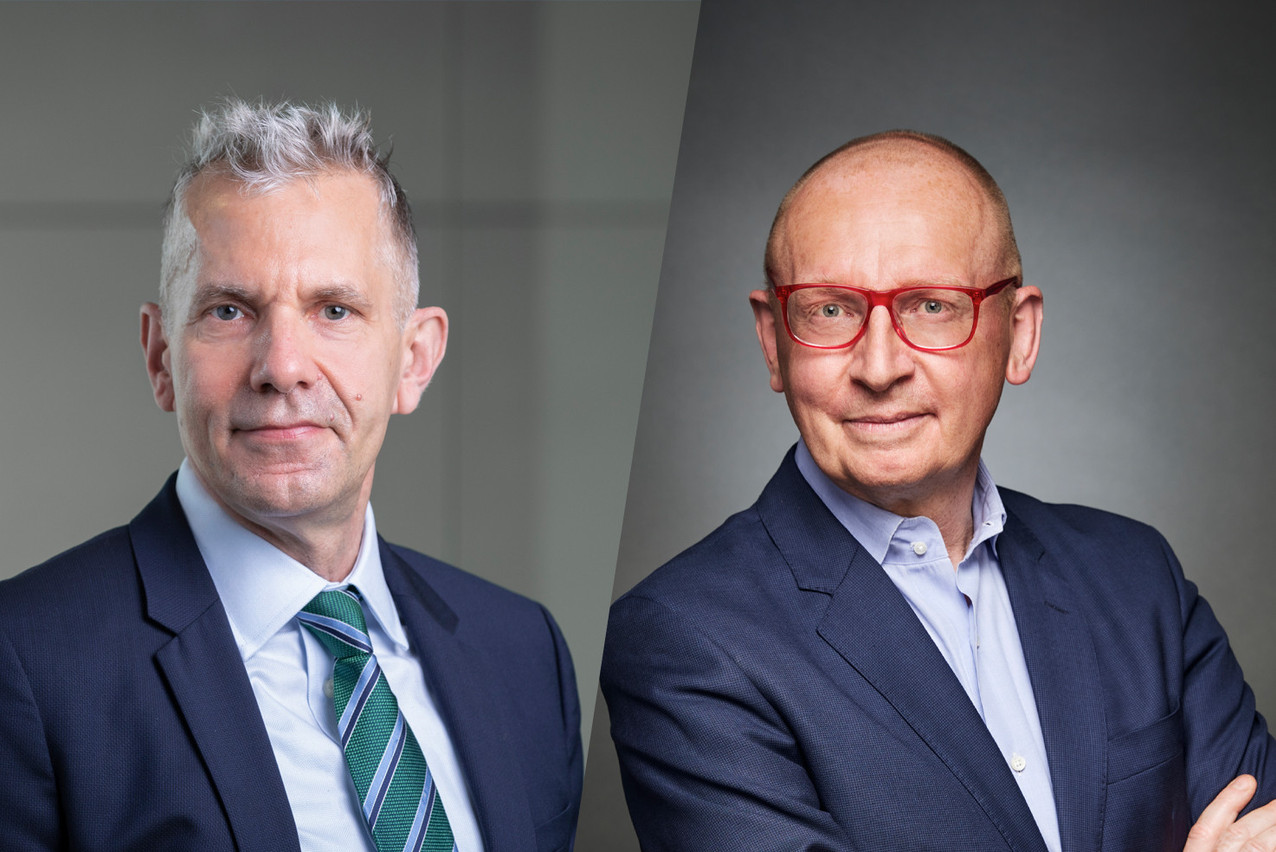On 29 February 2020, the LNS detected the first case of covid-19 in Luxembourg from its headquarters in Dudelange. Director Friedrich Mühlschlegel and financial director Alain Leriche talk about the pandemic and how it impacted the laboratory’s activities in 2020.
From analysis to sequencing, how have your covid activities evolved since the beginning of the crisis?
Friedrich Mühlschlegel: When the first case arrived, we were ready with a number of PCR protocols to detect it. This experience was useful for other players in the sector. When the need for testing increased, there was a very good collaboration. We entered a new phase by setting up our own testing station here at the LNS and contributed to the testing at the covid consultation centre in Kirchberg. Then, with the testing of the students.
In parallel, the LNS established serological tests to detect antibodies to covid-19. As the lead institution, we compared the protocols and advised the actors involved. We also contributed to the evaluation of the rapid tests.
We had to step up our efforts, but not at the expense of our usual activities. This was essential: people continued to get cancers, to have genetic tests...
How did you reorganise the teams (326.3 full-time equivalents, compared with 276.9 in 2019) to ensure this?
Alain Leriche: We improvised new jobs. We were not very mobile [before the pandemic, editor’s note], except to go and get samples from hospitals or laboratories for specific analyses. With covid, we went to homes for the elderly and to schools to carry out tests. About 50 temporary workers came to reinforce our teams during the year 2020. We recruited 72 people, including 10 fixed-term contracts. Our staff includes 20 different nationalities.
Were all the new positions related to the crisis?
A.L.: Essentially, but the other departments are systematically evolving. We have become more professional and have established two new departments since the 2018 hospital law: pathology and genetics. Before, a lot of these analyses were done outside the country, which is no longer the case. This is accompanied by the recruitment of highly specialised experts.
In 2020, we took over a service that was fragmented at government level, the monitoring of indoor pollution, within companies or homes. This service should be made up of six people in 2022. At the moment there are four.
What other activities are being developed?
F.M.: Our national genetics centre has expanded significantly, with exciting developments for our joint sequencing platform with the Luxembourg Institute of Health (List).
[Launched in 2018, the platform is to be transformed into a joint genomics centre of research and expertise. This consists of the study of DNA sequences, editor's note.]
We have invested between €1m and €1.5m related to covid.
What are the objectives for the coming years?
F.M.: In 2020, the LNS passed a stress test. The LNS strategic plan ends in 2022, so we will be busy developing the next one. We have a lot of ideas, but it is too early to formulate them.
How is the LNS funded?
A.L.: We have our own resources, when we carry out medical biology services on behalf of private laboratories or hospitals. Plus two major contributors: the Ministry of Health for special procedures not covered by the nomenclature, and the National Health Fund (CNS), which provides the majority of funding for the pathology and genetics departments.
Your net profit has risen from €3.65m to €4.69m in one year. How have your investments evolved?
A.L.: We had to equip ourselves industrially in microbiology by acquiring a lot of PCR platforms. Before the crisis, the number of PCR tests in virology--which are not only used to detect covid--was 16,000. This has risen to 112,000 in 2020, an increase of 600%. We have invested between €1m and €1.5m related to covid.
We have had other acquisitions, such as a NovaSeq6000 for €1m. This puts us on par with the large research institutes in neighbouring countries.
F.M.: It allows a greater capacity for genetic testing and sequencing of human genomes [improving diagnosis and advice, particularly for rare diseases and cancer, editor's note].
What will be the next investments?
A.L.: This will be submitted to a vote of parliament, which takes place at the end of the year. We must renew the current equipment and go further in diagnostic medicine, which is constantly evolving. We also want to make a major investment in 2022 in forensic medicine.
When the first case arrived, we were ready.
How is the activity shared between your six centres and departments?
A.L.: In terms of personnel, the most important department is pathology. Pathology and genetics are developing strongly. Medical biology also offers specific procedures not covered by private laboratories, such as malaria detection.
The microbiology department has exploded with covid and will become more important in the future, due to covid, but also to other similar diseases that will be found. We will need a local bastion to detect and prevent them. Within the framework of covid, we have been involved in a lot of international studies.
There are also developments in forensic medicine. If we move towards the legalisation of cannabis, for example, even for medical purposes, we will have to develop our services.
This is also the case for health protection. Pollution detection can move towards the detection of pollutants on construction sites, as well as food monitoring, which is of increasing concern.
This story was first published in French on . It has been translated and edited for Delano.


